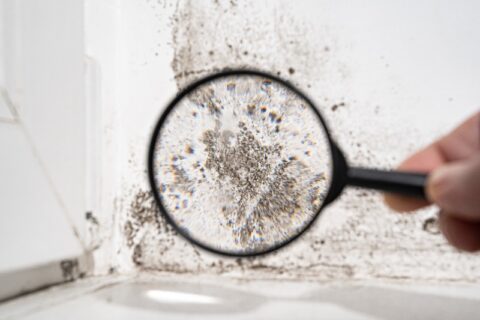Mold Remediation vs. Mold Removal: What’s the Difference?
If you notice a musty smell, heightened respiratory problems, or visible mold growth in your home or business, you must act quickly to eliminate this health hazard from the building. But which service do you need—mold removal or mold remediation? Many people assume these services are interchangeable, but they differ significantly in their approach and outcomes.
What is Mold Removal?
Mold removal focuses on getting rid of mold through physical cleaning and disinfection. The goal of this service is to eliminate visible mold, making your space appear clean and free from mold contamination. Mold removal is effective for small areas where mold only covers the surface of non-porous or semi-porous materials. However, because spores are everywhere, the mold will likely return if you fail to address the cause.
What is Mold Remediation?
Mold remediation services go beyond the surface level, addressing not only the visible signs of mold but also the underlying moisture issues that caused mold to grow in the first place. The goal of remediation is to remove mold and prevent it from returning. This comprehensive process involves several steps:
- Mold inspection and assessment: A thorough examination of your property identifies the extent and types of mold present. Experts also pinpoint the source of moisture allowing the mold to grow.
- Containment: To prevent the spread of mold spores to unaffected areas, professionals use various containment methods, such as sealing off the space with plastic sheeting and using negative air pressure.
- Air filtration: High-efficiency particulate air (HEPA) filters are set up to remove mold spores from the air.
- Mold removal: Depending on the severity, mold cleanup may range from simple cleaning to removing and disposing of mold-infested materials.
- Sanitization: Next, the area and any affected furnishings, textiles, and personal items are thoroughly sanitized using antimicrobial treatments and deodorization to eliminate remaining mold spores and odors.
- Preventative measures: You’ll receive advice to prevent future mold growth based on your situation. This may include fixing water leaks, improving ventilation, and lowering the humidity level inside your home.
- Post-remediation inspection: A follow-up assessment may take place to ensure successful mold removal and the implementation of preventative measures.
When Do You Need Mold Remediation?
Mold remediation is necessary in the following situations:
- The mold is widespread, covering more than 10 square feet.
- Porous surfaces like wood, drywall, carpet, or ceiling tiles are involved.
- The mold growth is linked to water damage or ongoing moisture problems.
- You suspect the mold is a toxigenic variety, such as Stachybotrys chartarum, also known as black mold.
- You or others in your household are experiencing allergies, respiratory issues, or other health concerns related to mold exposure that improve when you leave the vicinity.
Schedule Mold Remediation Services
Turn to Pacific Flood Restoration for dependable, professional mold remediation in San Diego or North County San Diego. Our team understands the threats mold poses to your health and property. That’s why we offer full-service, 24-hour emergency restoration. Thanks to our thorough approach, we’re confident we can make your space safe and mold-free. Contact us at 760-815-3033 for help creating a healthier environment in your home or business.


